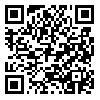BibTeX | RIS | EndNote | Medlars | ProCite | Reference Manager | RefWorks
Send citation to:
URL: http://hayat.tums.ac.ir/article-1-981-en.html
The results of several studies show the relationship between the ratio of nurses/patients with quality of care and patient outcomes (1-3). This means that less the ratio, more expected adverse outcomes for patients. These findings have led some institutions to establish mandated nurse-patient ratios (4). Establishing standard ratios could potentially improve patients' outcomes such as patients' safety (5, 6), decrease length of stay (3) and readmission rates (7), and improve recruitment and retention of nurses in the system and reduce their burnouts (8).
According to Mohammad Aqajani, Deputy of the Iran Ministry of Health and Medical Education (MOHME), the country is facing a serious nursing shortage as about 80 thousand nurses serve 80 thousand beds in public hospitals, i.e. one nurse per hospital bed. However, the national standards suggest at least two nurses per bed. Now each year there are nine thousand graduates of nursing baccalaureate program thus, even if no nurse is retired or leave the system and all graduates could be recruited to work in the nursing field, still at least nine years will be needed to provide adequate nurses. In fact, a significant number of nurses leave their job due to retirement, early retirement, turnover and migration so achieving the standard of nursing staffing in a ten-year timeframe seems impossible. ...
| Rights and permissions | |
 |
This work is licensed under a Creative Commons Attribution-NonCommercial 4.0 International License. |





